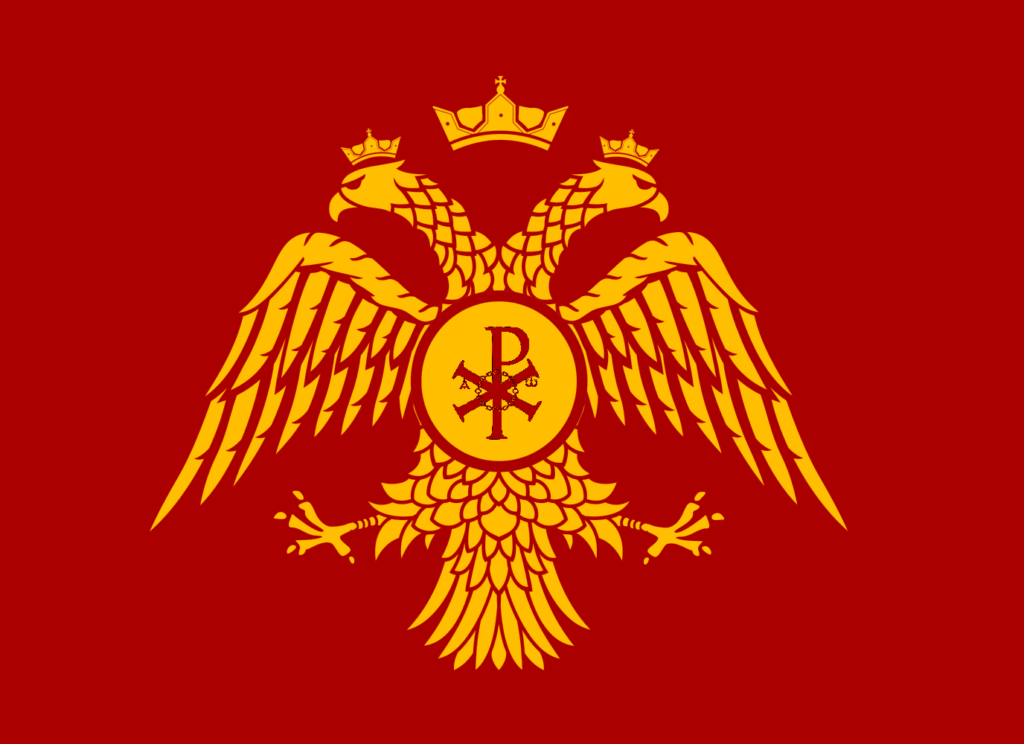By studying the history of nations, one can learn many interesting and unbelievable things. Most people in the 21st century do not even ask basic questions about the symbols of countries and continents. And if you look closely and dig deeper into history, it turns out that unrelated states now, previously had strong ties. Byzantium is one such country.
This may have been the last flag of the Byzantine Empire:

History of the flag
Byzantium emerged after the fragmentation of Rome into two states: the Western Roman Empire and the Eastern Empire. The latter became known as Byzantium. It ended its existence when it was ruled by the dynasty of the Palaeologues. The appearance of the Byzantine flag is associated with this dynasty. It is the family symbol of the Paleolog dynasty. At that time, Prince Ivan the Third of Moscow married Sophia Palaeologus. After the fall of Byzantium, the family coat of arms becomes, as inheritance, the coat of arms of the Russian Empire and the flag of Byzantium.
There is another version of the appearance of this symbol. It is associated with the ancient Indians and mythology. The prototype of this sign is the double-headed eagle of the Hittite kingdom. In these myths, eagles were represented as heroes or rebels. People depicted this symbol on the walls of temples.
What the flag was under the Paleologians is difficult to say. Many alternative historians suggest that the flag was red with an orange or yellow cross. The cross divided the flag into four parts and each part had a symbol resembling the letter B.

Description
The main part of the canvas is the double-headed eagle. The bird’s head is crowned with a crown and its wings are down. On the breast of the bird is the monogram of Jesus Christ, consisting of the first two letters of Christ’s name: χ-chi and ρ-ro. The eagle is in the middle of the canvas. The rest of it is the background. The paws are down and the eyes are pointed in different directions.
Color scheme
The background of the canvas is red. Many researchers have speculated that the background may have been purple or yellow before. The main symbol is presented in yellow.
Meaning of colors and symbol
The eagle has a long history and an interesting meaning. The heads looking in different directions symbolize the symphony of imperial power and the church. Some scholars believe that the bird is a symbol of victory over the Byzantines.
The red background signifies the blood shed by the Byzantine troops in the struggle for existence.
The heraldry of states already wiped out is a mysterious and interesting subject. The flag of Byzantium is similar to the coat of arms of the Russian state. Byzantium has forever left its imprint on history.
General information about Byzantium
| Official language | Late Latin, Koine, Middle Greek |
| Capital | Constantinople |
| Territory | 3,500,000 km² in the 6th century under Justinian I,
440,000 km² (1281) |
| Population | 35 million (6th century), 10 million (12th century),
5 million (1281) |
| Currency | solid, Byzantine coin, ducat |
| Phone Code | – |
Map of Byzantium










